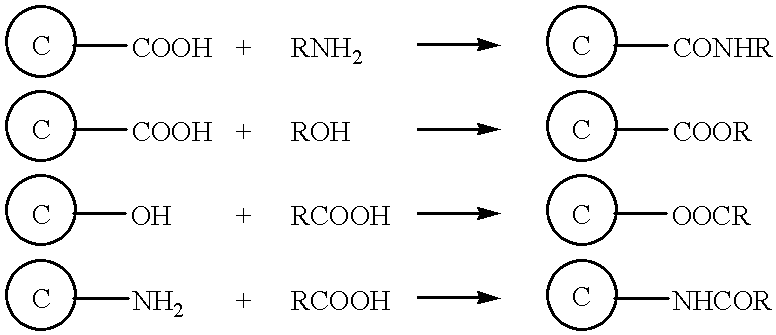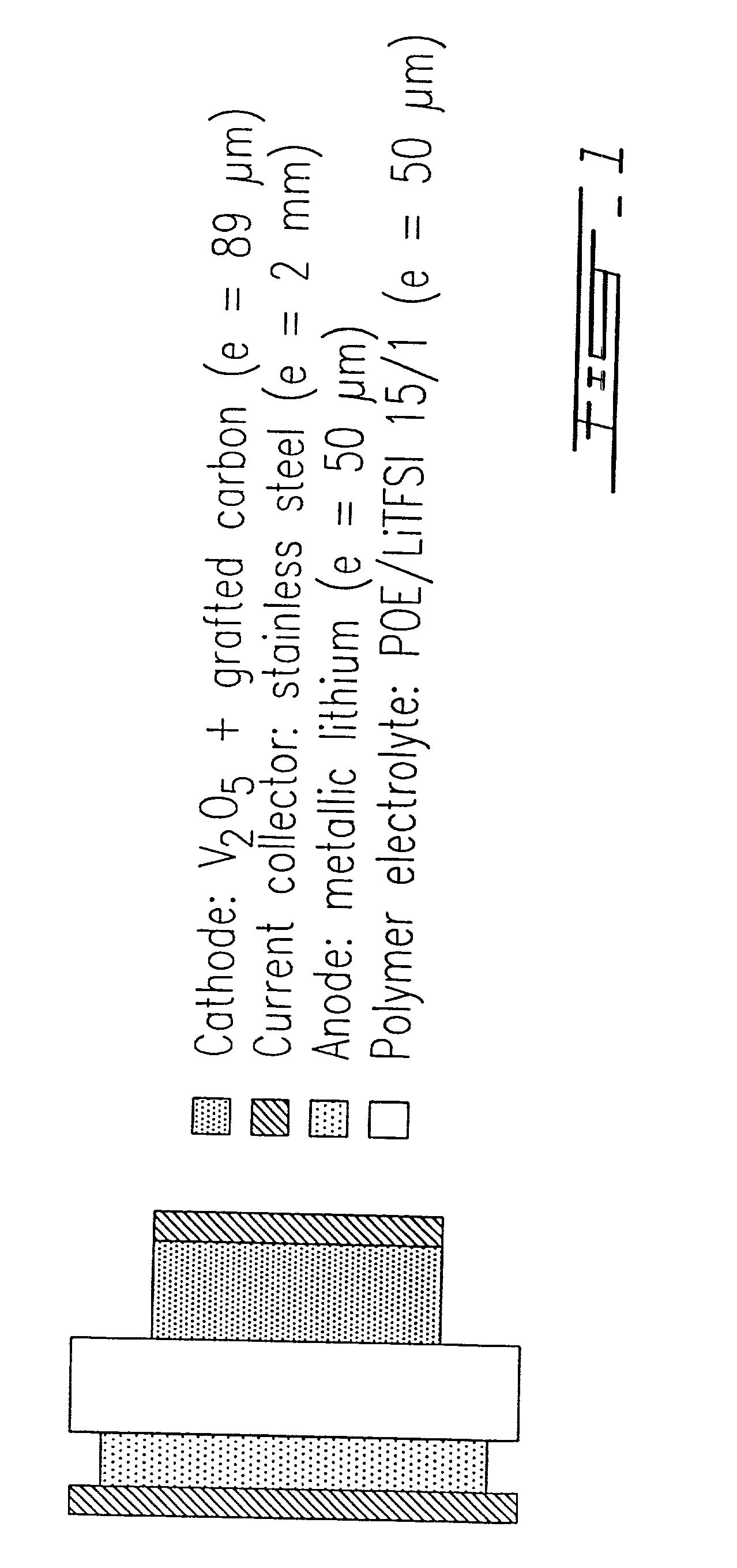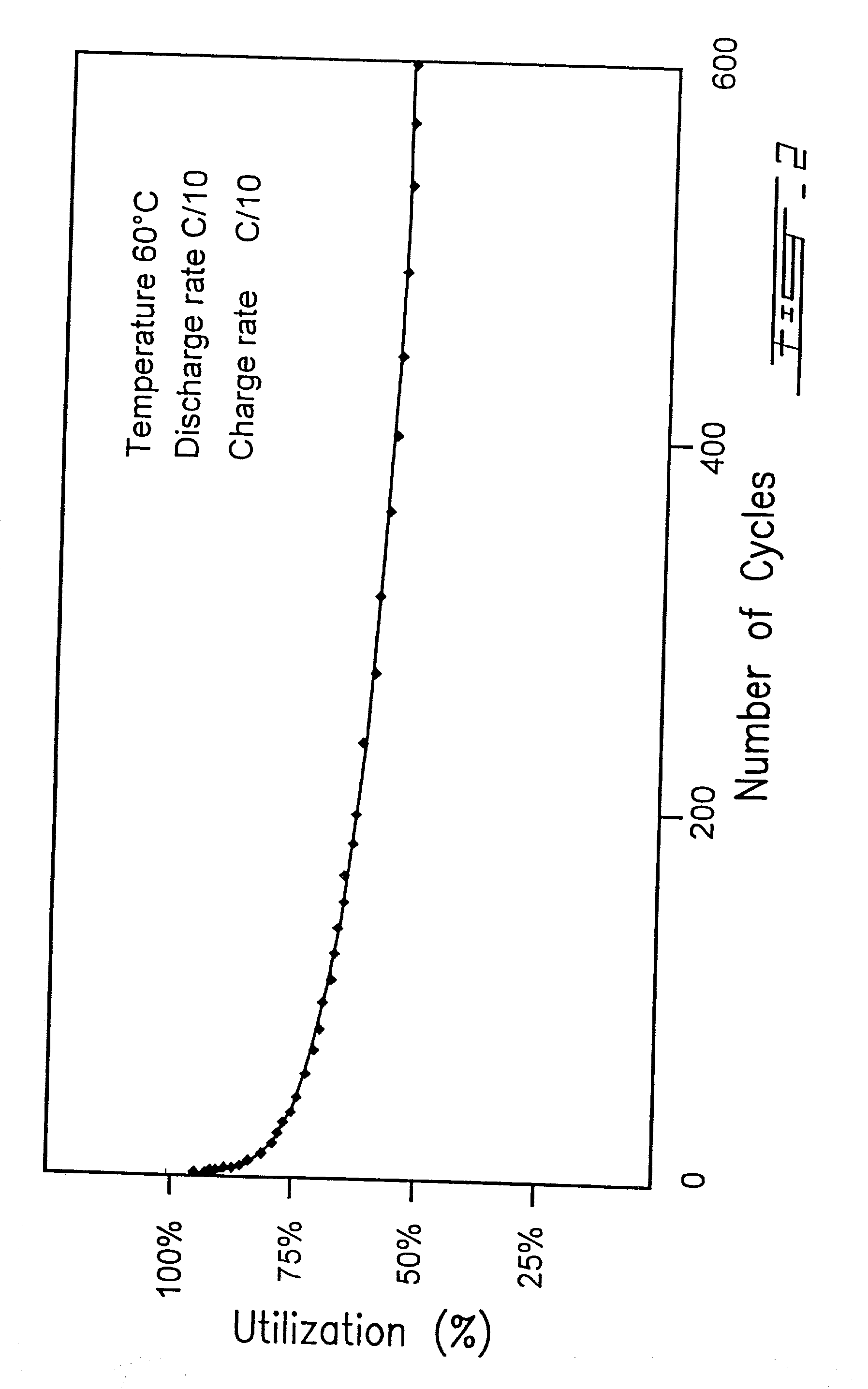Surface modified carbonaceous materials
a carbonaceous material, surface modification technology, applied in the direction of organic compounds/hydrides/coordination complex catalysts, fuel cells, potassium organic compounds, etc., can solve the problems of complex synthesis and large-scale operation, unsatisfactory, and unfavorable chain endings. , to achieve the effect of improving the stability of the surface, and improving the stability
- Summary
- Abstract
- Description
- Claims
- Application Information
AI Technical Summary
Problems solved by technology
Method used
Image
Examples
example 1
[0045] To a suspension of 200 g of oxidized carbon, FW 200, (commercially available from Degussa), having 0.61 mmoles / g of carboxyl groups on its surface (122 mmoles of carboxyl groups), in 600 ml of toluene, there is added 136 g (122 mmoles) of a polyoxyalkylene monoamine, Jeffamine.RTM. M-1000 (J-1000, commercially available from Huntsman), with an average molecular weight of 1,116 g / mole. The molecular weight of Jeffamine.RTM. was determined by titration with hydrochloric acid. Previously, water and ammonia which are present in Jeffamine.RTM. were removed by bubbling dry argon at 60.degree. C. during 24 hours. A measurement of the residual quantity of water by the Karl-Fischer titration method at less than 100 ppm has confirmed the validity of this process. An azeotropic distillation of the suspension was then carried out by maintaining stirring by means of an olive of magnetized Teflon.RTM.. After.apprxeq.30 mn, the solvent started to reflux in the Dean-Stark and after.apprxeq.1...
example 2
[0048] According to a process similar to the one described in Example 1, 50 g of FW 200 (commercially available from Degussa), having 0.61 mmoles / g of carboxyl groups at its surface (30.5 mmoles of carboxyl groups) were reacted with 67.7 g (30.5 mmoles) of Jeffamine.RTM. M-2070 (J-2070, commercially available from Huntsman) having an average molecular weight of 2,219 g, purified and characterized such as described in Example 1. There is obtained a material of shiny aspect indicating that the surface was coated with Jeffamine.RTM. M-2070.
[0049] An analysis by infrared spectroscopy with multiple reflection has confirmed the grafting of Jeffamine.RTM. M-2070 with amide bonds. The result of a microanalysis of the grafted carbon confirms the theoretical result which is expected for this material.
2TABLE 2 Microanalysis of FW 200 grafted with Jeffamine .RTM. M-2070 Carbon % C % H % O % N FW 200 grafted J-2070 73.10 4.90 21.30 0.78 Theoretical result (a) 73.40 5.50 19.50 0.40 (1) Jeffamine ...
example 3
[0051] To a suspension of 200 g of oxidized carbon, FW 200 of Degussa, having 0.61 meq / g of carboxylic groups at its surface (122 mmoles of carboxyl groups) in 300 ml of benzene, there is added 13.15 g (130 mmoles) of a monoamine vinyl ether, 3-amino-1-propanol vinyl ether CH.dbd.CHO(CH.sub.2).sub.3NH.sub.2 (commercially available from BASF). Then, the suspension is subjected to an azeotropic distillation by maintaining stirring with a magnetized Teflon.RTM. olive.
[0052] After.apprxeq.30 mn, the solvent started to reflux in the Dean-Stark and after.apprxeq.10 mn the appearance of the first drops of water was noted. After 14 hours under reflux, the quantity of water collected was.apprxeq.2.1 ml in accordance with the expected quantity (2.2 ml for amidizing of 122 meq of --COOH) and new drops of water have ceased to appear. Reflux was maintained during 2 hours. After cooling, the carbon grafted by filtration was recovered and it was thereafter dried under vacuum.
[0053] An analysis of ...
PUM
| Property | Measurement | Unit |
|---|---|---|
| temperature | aaaaa | aaaaa |
| temperature | aaaaa | aaaaa |
| temperature | aaaaa | aaaaa |
Abstract
Description
Claims
Application Information
 Login to View More
Login to View More - R&D
- Intellectual Property
- Life Sciences
- Materials
- Tech Scout
- Unparalleled Data Quality
- Higher Quality Content
- 60% Fewer Hallucinations
Browse by: Latest US Patents, China's latest patents, Technical Efficacy Thesaurus, Application Domain, Technology Topic, Popular Technical Reports.
© 2025 PatSnap. All rights reserved.Legal|Privacy policy|Modern Slavery Act Transparency Statement|Sitemap|About US| Contact US: help@patsnap.com



